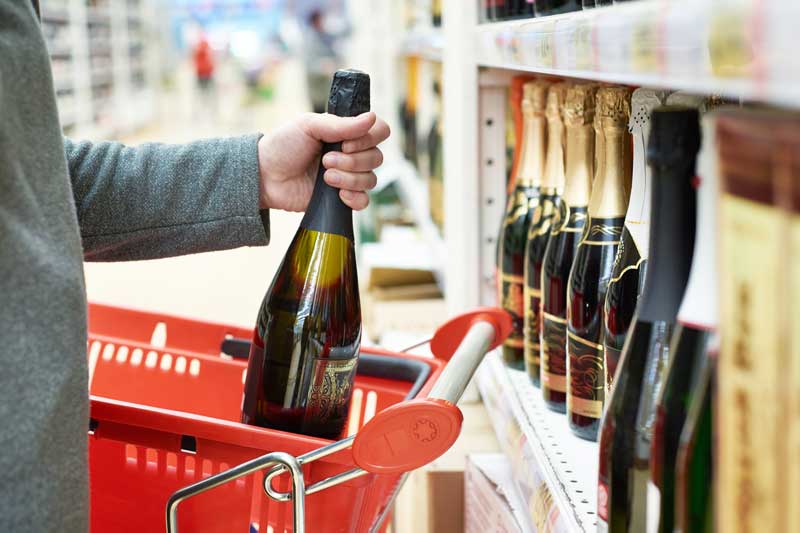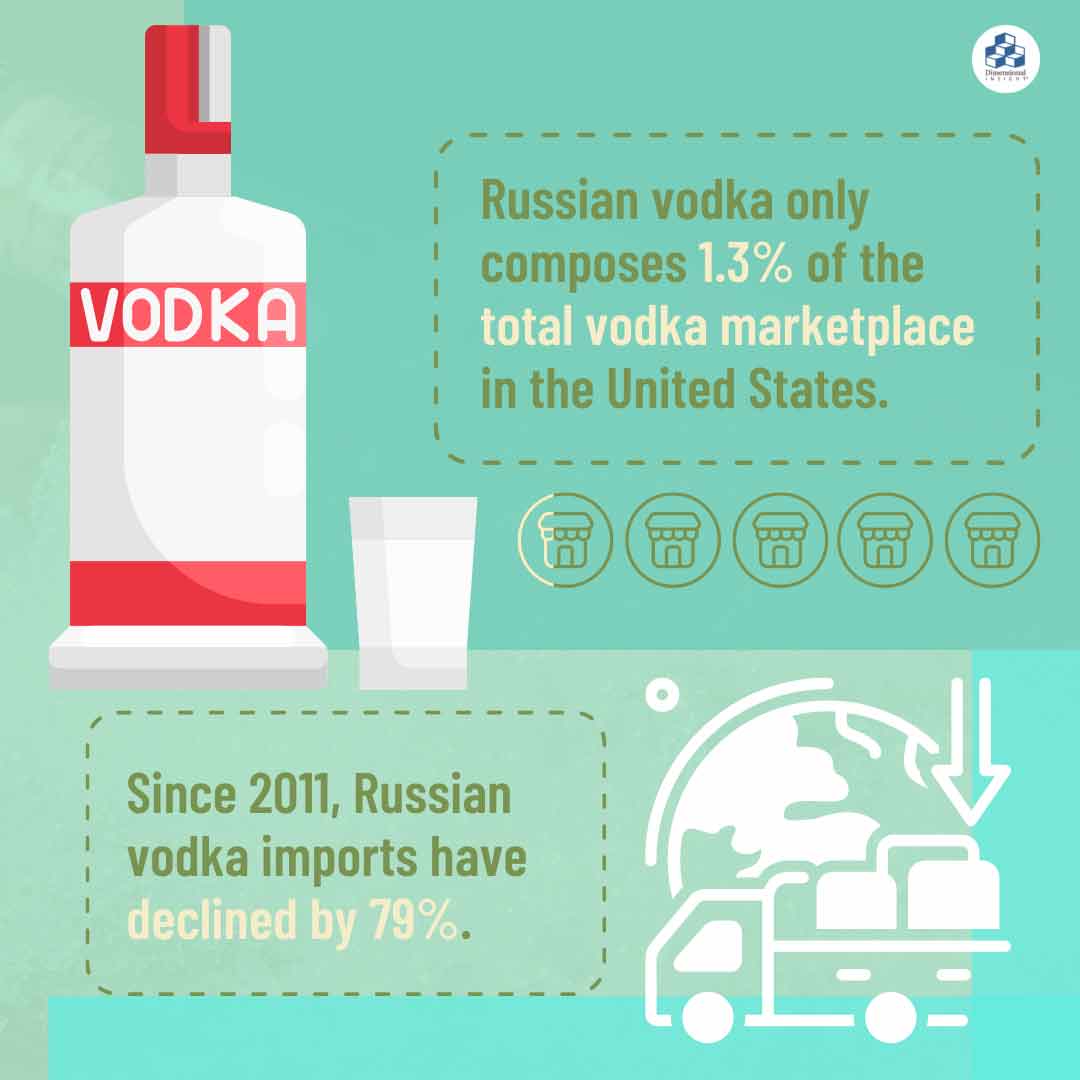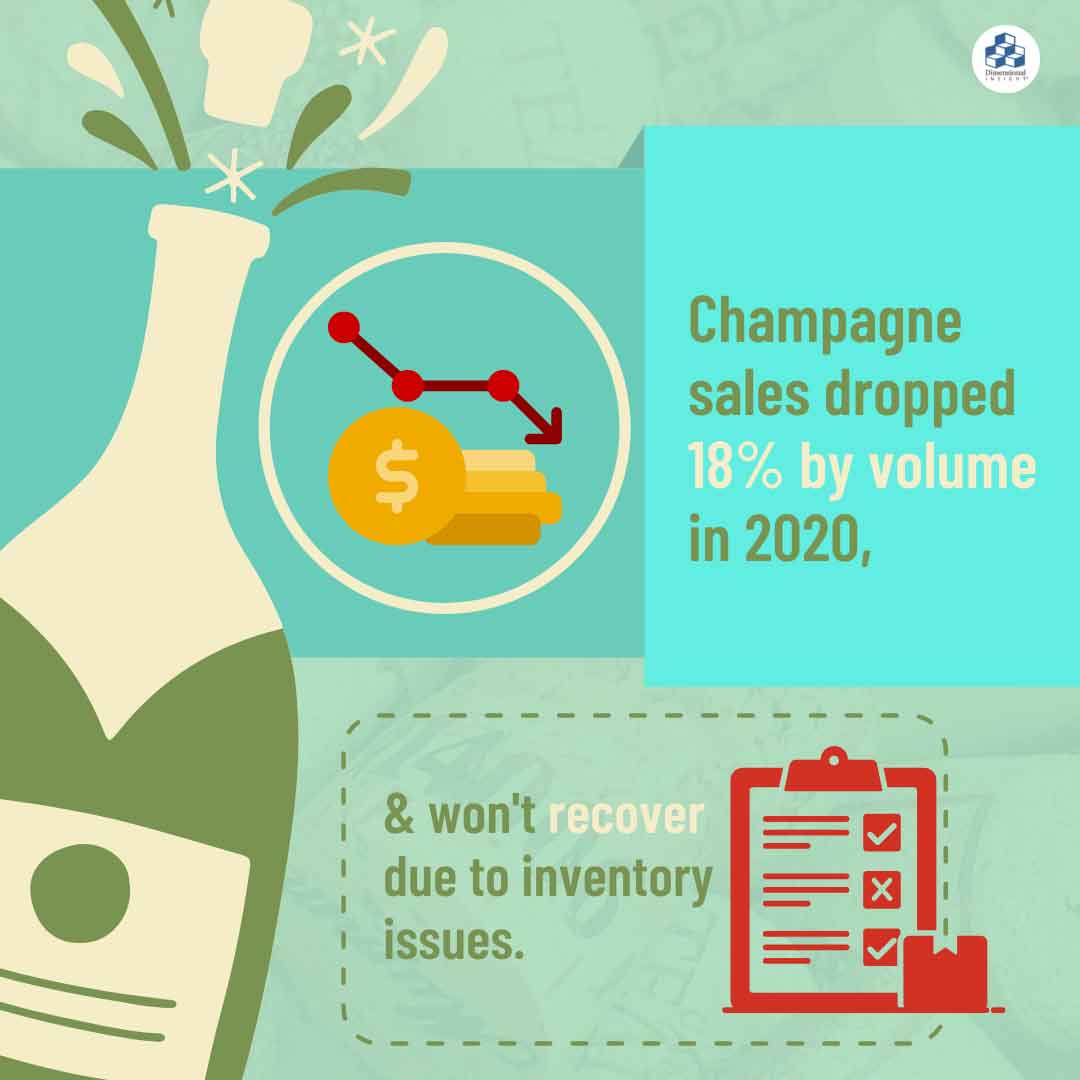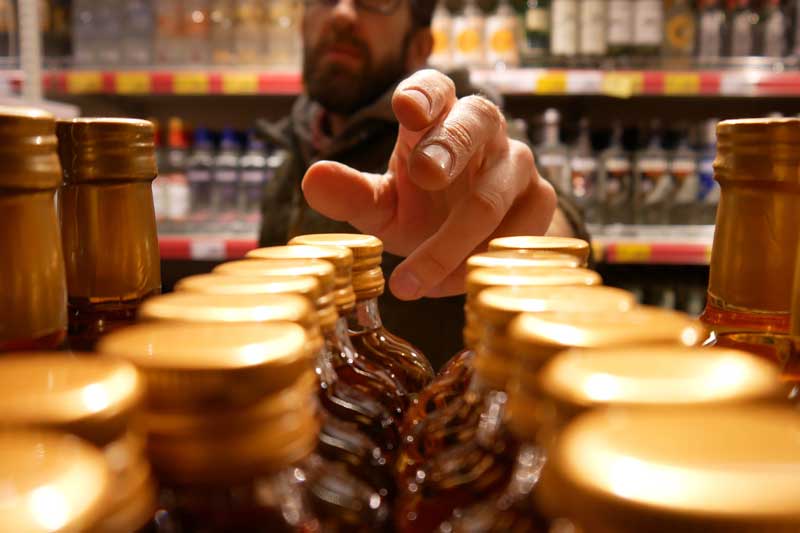The next time you enter a liquor store, the shelves may look different.
Global political events and lasting repercussions from the pandemic have liquor store shelves stocked differently.
The sanctions put in place by the United States punishing Russia for its invasion of Ukraine include banning the import of Russian vodkas, such as the brands Russian Standard and Beluga Noble Russian Vodka.
Looking for a bottle of bubbly? Champagne will also be harder to find. Champagne sales dropped 18% by volume in 2020 and won’t recover due to inventory issues. In 2020, as Champagne houses were forced into lockdowns and demand fell, the Champagne board then set the upper limit for Champagne production about 25% less than in 2019.
This pairing of world events has resulted in distributors struggling to predict what people want next.
On the rocks
The banning of Russian vodka and other sanctions placed on Russia has dominated the news. But Russian vodka only composes 1.3% of the total vodka marketplace in the United States.
Since 2011, Russian vodka imports have declined by 79%.
“There’s just a small tad of Russian vodka in the U.S. marketplace, but we appreciate and recognize the sentiments by government stakeholders and all the concerns that are happening in Ukraine at this time,” Distilled Spirits Council President & CEO Chris Swonger told Yahoo Finance.
Some brands you might associate with Russia are not made there. For example, Stoli is produced in Latvia. Smirnoff is wholly owned by Diageo, with no ties to Russia. And any Smirnoff that is consumed in the U.S. is made in Illinois.
The idea of banning Russian vodka made headlines because vodka remains at the top of the spirits category in the U.S., accounting for 27% of all volumes.
In 2021, 78.1% of 9-liter cases of vodka were sold in the United States, generating $7.3 billion in revenue for distillers.
The top 10 vodka markets for the United States consumer might surprise the average person, with France leading the way, followed by the Netherlands, Sweden, Latvia, Poland, and then finally Russia.
Champagne problems
After the 2020 lockdown tanked champagne sales — after all, there wasn’t much to celebrate — demand for the bottles of bubbly rebounded, and sales skyrocketed.
“Consumers began to invest more heavily in luxury ingredients and high-end wines to enjoy at home, in lieu of dining out at restaurants,” Laurance Alamanos, export manager for Champagne Ayala, told Wine Magazine.
But the rebound in sales created a new issue: lack of supply because of the Champagne board’s limit on production.
“The initial decisions made by importers to slow—or even more drastically, to stop—importing wines is really a larger issue than the supply chain,” Thatcher Baker-Briggs, a retailer, importer, and owner of Thatcher’s Wine Consulting, whose inventory is at least 20% Champagne, told Wine Magazine.
“Vintages during and after COVID will be where the actual shortage of Champagne will take place. We have not quite yet felt these impacts,” he added.
As consumers started celebrating with Champagne again in 2021, the Champagne region experienced extreme weather issues.
First, an unprecedented heatwave in March burned vines. Then, frost came in and froze the vines.
In June and July, torrential rains created mildew on many remaining plants. As a result, many vineyards lost more than half of their total vines. All of it adds up to this year’s harvest being the smallest in decades.
“In Champagne, you have 34,000 hectares for roughly 16,000 producers and around 4,000 labels,” says Alamanos. “We are seeing a domino effect with the great houses being affected first, then the less renowned ones.”
What distributors can do to adapt to shortages, sanctions
Vodka remains the king of spirits in the U.S., and many people don’t realize how small a piece Russian vodka makes up of the market. But consumers do care about a brand’s values and story.
Distributors can push to highlight through marketing what brands are made in the United States or allied countries to help inform consumers. Instagram, email marketing, and in-store signs can help with this education process.
For distributors struggling with Champagne shortages, focusing on other celebratory drinks, such as prosecco or cocktails, can help ease the transition for customers. For example, have salespeople host tastings in stores to show prosecco can taste as good as the real thing.
- 87% of Utilities Have Experienced at Least One Data Breach in Last Three Years - February 5, 2024
- Can Drones Lower Your Next Utility Bill? - January 10, 2024
- Onshore Wind Farms Are The Next Big Thing In Renewable Energy - December 6, 2023





